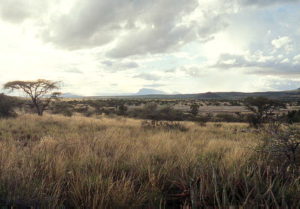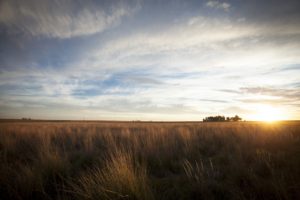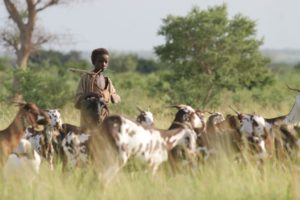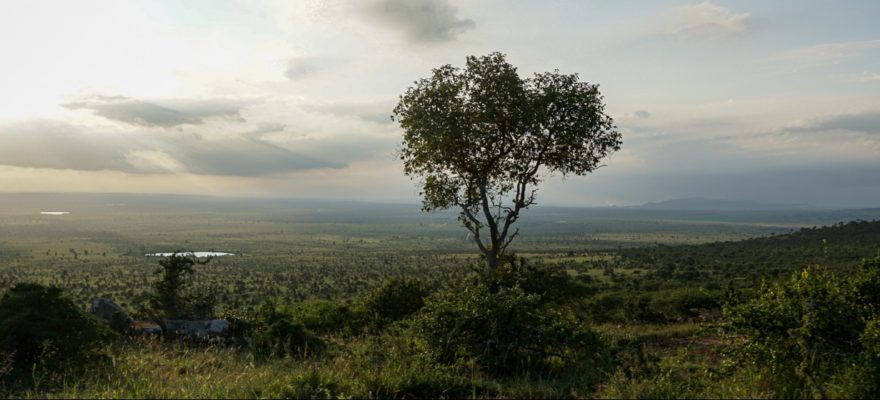This article originally appeared on ILRI website.
Written by: Elliot Carleton, Princeton in Africa Fellow
On November 11, 2019, volunteers planted 11 million trees across Turkey as part of a government-backed mass planting project. The effort broke the world record for the most trees planted in one hour in a single location, with 303,150 saplings planted in the northern Anatolian city of Corum. Less than three months later, up to 90 per cent of the saplings planted in Turkey were dead. Reports attributed the failure to various factors, including the trees being planted at the wrong time and a lack of rainfall. Whatever the case may be, the lesson was clear: large-scale tree planting projects do not always work.
Tree-planting schemes like this have become increasingly popular in recent years to address global environmental challenges such as climate change and land degradation. In 2011, the United Nations’ Bonn Challenge proposed to restore 350 million hectares of land through ‘forest landscape restoration’ by 2030. National governments and regional blocs have similar plans, such as the Sahelian ‘Great Green Wall’. The AFR100 initiative, funded by international donors like the World Bank, has pledged to afforest 100 million hectares of mostly savannah across Africa over the coming decade. In its press release, the World Bank noted that investments in tree planting ‘help restore degraded landscapes, improve agriculture productivity and promote livelihoods’.
To most people, increasing the number of trees around the world seems like an obviously good thing—trees provide many environmental services such as carbon sequestration and wildlife habitat, without any apparent downsides. However, several recent papers and reports suggest trees are far from the silver bullet their proponents claim they are. More specifically, a recent paper from Ian Scoones finds that tree-planting schemes can harm rangeland health and biodiversity. In fact, international agreements proposing to afforest millions of hectares of rangelands could spell disaster for the pastoralists that live there.
Trees have been an object of human veneration for hundreds of years. In France during the 1800s, the idea that a civilized European country must have at least 30-33 per cent forest cover took hold among French foresters and policymakers. When European ‘civilizing’ missions eventually came to Africa, they brought this idea with them, causing them to view the region’s vast savannahs as degraded forests symptomatic of a supposedly inferior civilization.

Since that time, trees have continued to be a centrepiece of environmental governance, with people worldwide promoting them as a silver bullet for diminished precipitation, warming temperatures, soil erosion and decreasing biodiversity. This global obsession with forests is evident in today’s ever-growing list of international reforestation initiatives.
Many of the regions identified for reforestation contain rangelands and pastoral communities. In fact, research has shown that up to 40 per cent of the global area identified for ‘forest landscape restoration opportunities’ overlaps with grassland biomes (including rangelands). These projects often assume that rangeland landscapes are degraded ecosystems needing restoration to natural forest. In many cases, that is simply not true.
Rangelands, which are diverse mixes of trees, shrubs, deserts and grasslands that can be used for extensive livestock production, are tremendously productive landscapes covering more than half of the world’s terrestrial surface. However, their productivity goes unnoticed mainly because, as International Livestock Research Institute (ILRI) senior scientist Fiona Flintan explains, ‘a lot of the bounty of rangelands—their productivity, their biodiversity—is hidden below ground’.
Rangeland ecosystems have extensive underground root systems and soils that quickly and efficiently incorporate dead vegetation matter. As a result, rangelands can rival the carbon sequestration abilities of forests. They are also better at reflecting solar radiation than darker forests. Research shows that the ability of grasslands and their carbon-rich soils to cool the Earth is so great that they were likely a major impetus in the onset of the Pleistocene glaciation more than 2 million years ago. Jason Sircely, an ecosystem ecologist at ILRI, says that ‘grasslands do store a lot of carbon… but there is more carbon stored below ground than above ground’. Unfortunately, this leads carbon forestry schemes that focus on above-ground biomass to overlook grasslands’ fundamental role in combating the climate crisis.

In addition to their environmental services, rangelands are vital to both people and wildlife. These vast landscapes sustain the livelihoods and health of pastoralists, hunter-gatherers and ranchers worldwide. The number of pastoralists alone that are supported by the world’s rangelands is anywhere from 200-500 million people. Rangelands also serve as indispensable habitat for an abundance of wildlife and provide vital forages to the world’s livestock. Given the tremendous value of rangelands, conservation initiatives should focus on protecting and restoring the original function of these landscapes.
Tree-planting schemes, however, often do the exact opposite. Most tree planting projects utilize exotic, fast-growing trees that can start sequestering carbon the quickest—that is, if they can survive in their new environment. This can have unanticipated consequences, though. Take, for example, the Prosopis juliflora, a tree native to Mexico, South America and the Caribbean, which has become one of east Africa’s highest priority invasive species after aid programs first introduced it to the continent to combat desertification. As it sprawls across east Africa, Prosopis juliflora has outcompeted native species and overrun grazing pastures, piercing the hooves of livestock with its thorns and causing tooth decay among the animals that eat its sugary pods. In this way, exotic trees can end up jeopardizing the lives of many of the pastoralists and livestock they were supposed to help.
Nearly 80 per cent of the commitments to international initiatives like the Bonn Challenge involve planting monoculture tree plantations or a limited mix of trees that produce commercial products such as fruit and rubber. Many of these commitments are in countries such as Kenya and Ethiopia which have large swaths of rangelands. With carbon offset projects creating a global rush to accumulate carbon credits, tree plantations have become the preferred method as they are easily managed and grow quickly, ensuring that the carbon credits can be rapidly cashed in. This approach often overlooks that plantations are of little use to local pastoralists and can suppress indigenous plant and animal diversity. To make matters worse, Oxfam argues in a recent report that rushing to net zero through intensive tree planting would likely result in an explosion in the demand for land, specifically in low-income countries, which could prove detrimental to land rights and food security.
Another important concern is that the tremendous water requirements of most fast-growing, non-native trees can reduce streamflow and divert natural water cycles away from indigenous plants and animals. In fact, another devastating impact of the invasive Prosopis juliflora has been its depletion of Ethiopia’s water sources. This limits the role grasslands, which have high levels of infiltration, normally play in maintaining hydrological cycles. Unfortunately, because carbon schemes do not put a price on water, trees are given priority over already delicate rangeland water cycles.
This is not all to say that trees do not belong on rangelands. Trees are often natural elements of rangelands that can provide many benefits such as shade, fruit, habitat—and yes, under the right conditions, carbon sequestration. However, while there are situations where new planting may be beneficial, there is clear evidence that the rushed planting of exotic trees in unsuitable environments will lead to little long-term carbon storage. Instead, encouraging the regrowth of existing trees will be more effective in sequestering carbon to mitigate climate change while still preserving the natural dynamics of rangelands. As Sircely notes, ‘in rangelands, it is really about managing what is already there’.
For this reason, decisions regarding the world’s rangelands must consider input from local pastoral communities. Pastoralists have lived on rangelands for uncountable generations, and their knowledge as guardians of these landscapes is vast. Sircely suggests that ‘you need communities to manage those rangelands in a way where they are benefitting through things like livestock production. Those communities provide environmental services like carbon storage, preventing erosion and maintaining a productive ecosystem, which benefits people as well as wildlife.’ The intricate connections between pastoral livelihoods and rangeland health reveal that excluding pastoralists from tree-planting schemes in the name of carbon offsetting and rangeland ‘restoration’ could have devastating impacts not only for people but for wildlife and the environment as well.

The looming danger international tree-planting schemes pose to the world’s rangelands highlights a fundamental lesson as we move forward in the fight against climate change: nature-based solutions are not inherently beneficial, and they can have significant consequences for people, wildlife and the environment when they are not carefully thought out. To effectively and equitably address climate change, nature-based solutions must take a holistic approach that responds to the needs of the local populations who depend on those ecosystems for their survival. By placing local people at the centre of our environmental solutions, we can address the world’s greatest environmental challenges in a way that enhances both livelihoods and the native ecosystems that sustain them.




